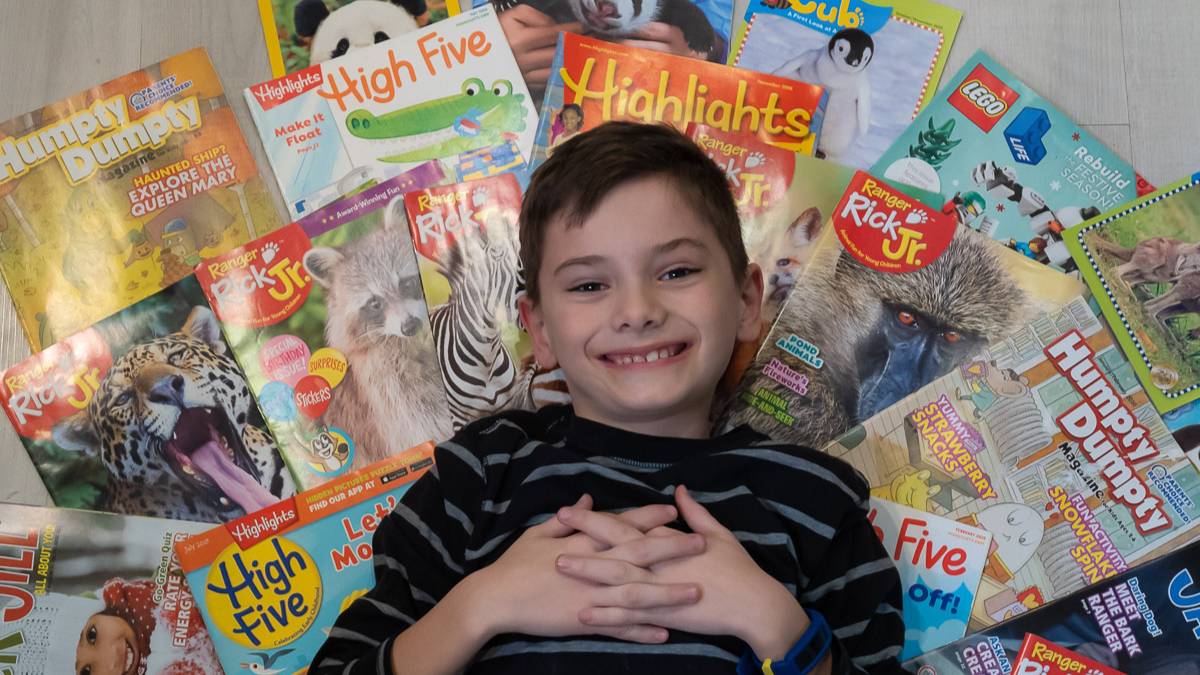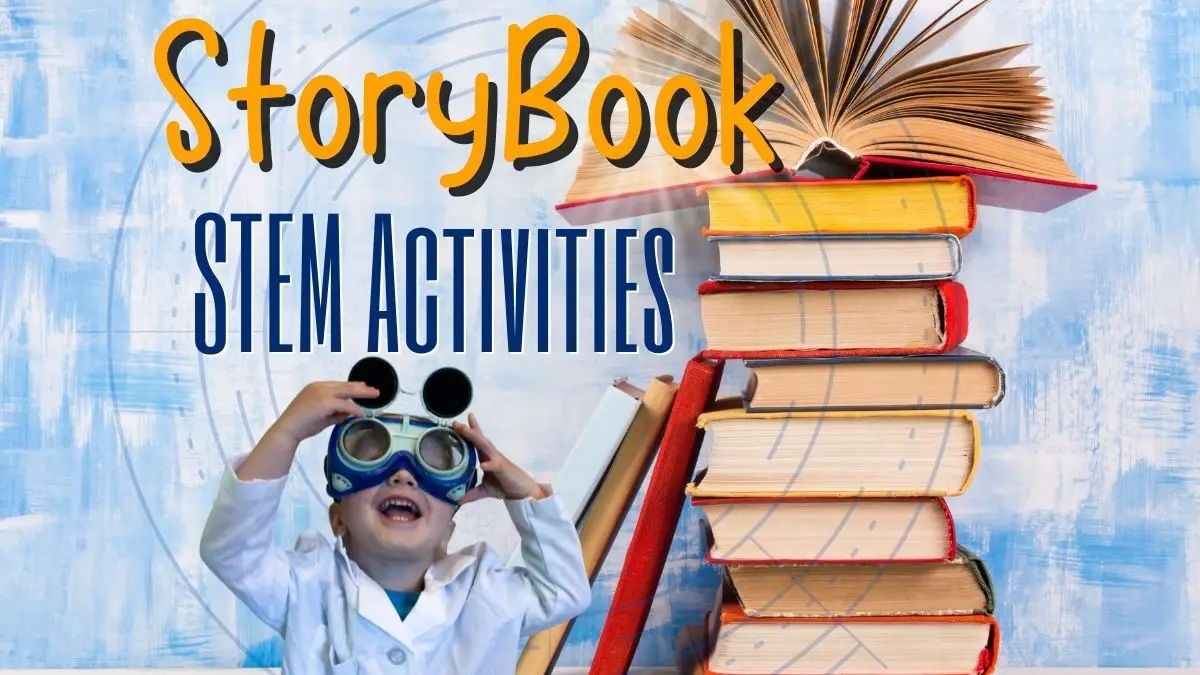Getting kids started in math can be a challenge. Where do you begin?
There are plenty of outstanding math books for preschoolers that can help break the ice.
Stories that incorporate math help kids visualize math concepts. Kids that don’t particularly like math may be enticed by the story, and learn math by approaching it from a different angle. Conversely, a story about math may interest a child who likes math but doesn’t like to read. Sometimes the artwork is engaging enough to hold a child’s attention to the point where they don’t realize they’re learning.
There are tons of math books for children to be found. We’ve compiled some of our kids’ favorites (and ours) to get you and your little ones started. Let’s explore.
Pete the Cat and His Four Groovy Buttons
by Eric Litwin (art by James Dean)
This is a fun book, and our kids love it ~easily our favorite Pet the Cat book. Pete the cat has a shirt with 4 “groovy” buttons. One by one, the buttons pop off, and the book marks each one with a subtraction problem.
This sets up a predictable rhythm where kids are anticipating the next button pop, and thinking ahead to the next math problem. When his last button is gone, all Pete has left is his belly button. It’s a silly story, the set up and rhythm are great, and the kids find it easy to read along.
The publisher has a great video rendition of the book, complete with a groovy song. Be warned – once you hear it, you’ll never again open the book without reading it to the tune the song. It’s catchy enough I find myself singing “My Buttons, My Buttons” for days after we reed the book or watch the video.
Math Concepts: Subtraction
Followup Activity: We wouldn’t recommend popping buttons off of your child’s shirt, but you can use buttons or similar objects to make simple subtraction problems.
Snacks work great: If you have 4 crackers and eat one, how many crackers are left? Kids get to have a treat, and do math at the same time.
There is also a Pete the Cat Groovy Buttons Game (suggested for ages 3 and up) where you add or subtract buttons from your pile, until all of the buttons are gone.

Pete the Cat’s Got Class
by James Dean
In Pete the Cat has Class, the teacher uses stacks of different colored blocks to teach basic addition and subtraction. Kids learn in easy to do at home exercises that a stack of 3 red blocks combined with a stack of 4 yellow blocks totals 7 blocks.
When Pete’s friend Tom struggles with his math lessons, Pete decides, “helping is cool” and sets off to help tutor his friend. Pete creates some story problems with toy cars. As they work through different stories and problems, math clicks with Pete’s friend Tom, as well as the reader.
“I can’t Believe it, I’m doing math – and I’m loving it!”
In addition to demonstrating how to use toys to make up stories that demonstrate addition and subtraction, we get several other lessons from this book.
First, the notion of peer tutoring. I worked part of my way through school as a peer tutor. Not only did I make a few bucks between classes, but it cut down on my study time. If I could take a topic, break it down, and explain it to someone else, it deepened my understanding.
Second, since Pete and Tom are doing their homework together, they make the same mistake. When the teacher confronts them for copying from each other, it looks like Tom cheated. They need to explain how Tom suddenly became good at math. This subtly touches on the notion of doing your own work, without beating the reader over the head with a morality lesson.
“Take it from Pete, Math is Neat.” Our kids think so too.
Math Concepts: Addition and Subtraction
Follow up: Using the book as a guide, use toy blocks and cars to create math problems with your little ones. No blocks or cars on hand? No problem, just substitute other household items. Snacks like crackers or cookies are great, because they often hold a child’s attention; especially if they get a treat for a correct answer!
Count the Monkeys
By Mac Barnett & Kevin Cornell
Given the title, this book has surprisingly few monkeys. Not to fear, they do show up eventually. Along the way we’re treated to an increasingly numerous – and increasingly silly – cast of characters that keep scaring the monkeys away.
This is a cute book that’s fun to read. Each page builds some suspense as kids wonder with each page turn if they’ll see the monkeys the title promises.
Math Concepts: Counting
Counting Crocodiles
By Judy Sierra
For a counting book, Counting Crocodiles has more story than most. A monkey that lives on an island of lemons spies a banana tree across the sea. She wants some bananas, but the see if filled with crocodiles. What’s a clever monkey to do? The story presents a problem for the monkey (and reader) to solve.
The crocodiles boast there numbers are too terrible, and she’d never make it across. They are so confident that they demand to be counted. They monkey is all too happy to oblige, counting the crocodiles back and forth across the see, bananas in hand.
Math Concepts: Counting forwards and backwards, problem solving
Follow Up: Counting is fun, though we like to play to the problem solving aspect of this book. We challenge our little guys to think of other things the monkey could do to get some bananas. What would your kids come up with?
Hippos Go Berserk
By Sandra Boynton
One lonely hippo puts out the call to some hippo friends for romping good time. Hippos arrive in easy to count groups until all the hippos (and one guest) go berserk for a hippopotamus party, then depart in the same fashion the following morning.
Boynton’s whimsical artwork has thrilled kids for several generations, and there is a reason why her books are hits with both kids and parents. I always smile when our children selects a Boynton book for story time.
Board books make short reads, and we often wind up reading it several times in a row. It’s hard to resist a child’s plea to, “read it again.”
Our kids like pointing out the hippo with the balloon, or the ones wearing party hats on each read, and greatly anticipate the page where the hippos do, indeed, go berserk.
Math Concepts: Counting
Five Little Monkeys Jumping on the bed
Eileen Christelow
Children’s author Eileen Christelow has taken the nursery rhyme “Five Little Monkeys Jumping on the Bed” and expanded it into a whole series of counting books. You’ll find the monkeys washing cars, baking cakes, sitting in trees, or reading (in bed).
These are fun books, and it’s irresistible for the kids not to sing along while you read the book to them. You can also do the associated fingerplay with each verse, holding up fingers to represent the monkeys, rolling off and tapping your head, mimicking a phone to call the doctor, and shaking your finger with each syllable of the doctor’s orders.
Math Concepts: Counting, subtraction (as each subsequent monkey falls out of bed)
Obi 123
By Calliope Glass
Our kids love Star Wars, and a counting book around their favorite characters is a welcome addition to our collection.
Each turn of the page brings a number depicted with a scene or characters from the Star Wars movies, along with a few rhyming verses to tell about the character or actions. From jawas, the cantina band, pod racers, the jedi council, starships, or stormtroopers, there are plenty of things to explore from all eras of the Star Wars movies.
Our kids enjoy the artwork (illustrated by Katie Cook) and characters so much, they sometimes forget they are counting or doing math exercises.
If you can’t get enough Star Wars counting, there is also Star Wars: 1, 2, 3.
Math Concepts: Counting to 20
Obi 123 also a companion alphabet book, ABC-3PO.
Ten Terrible Dinosaurs
Starting with 10 dinosaurs, this is a countdown until there is only one remaining. As each dinosaur leaves, the new number is on the next page to encourage kids to guess how many dinosaurs are left.
Don’t miss the opportunity to roar with your child on the last page!
Math Concepts: Counting backwards from 10 to 1
Related Post – Using books and stories can be a great way to introduce math concepts. Check out our post here for other ways to make math fun.
Bulldozer’s Shapes: Goodnight, Goodnight, Construction Site
By Sherri Rinker
Goodnight, Goodnight, Construction Site is a delightful series of books around construction vehicles. In Bulldozer’s Shapes, the bulldozer creates piles or digs various shapes for your child to identify. Written in an easy reading rhyme, it’s a great way to teach basic shapes while reading.
Illustrator Ethan Long’s emotive vehicles and and illustrations are a perfect companion to the story in this book as well as others in the series.
If your child like this one, they’re sure to love some of the other books in the Goodnight, Goodnight, Construction Site series as well.
Math Concepts: Shapes
Follow Up: What shapes can you find in everyday objects, or during a car ride? Can your kids see circles in wheels or rectangles in buildings. Can they find traffic signs that are triangles? What shapes can they point out to you?
Mission: Addition
Mission Addition is a great math book for preschoolers moving into kindergarten, and starts right in. It explains the + and = signs, and lays out a series of well illustrated story problems to make the math concepts relatable.
There are several chapters that answer the question, “When would I use math in real life?” The story characters use math to keep score in games, count pets, count money, and total up a restaurant bill.
Math Concepts: Addition
Followup: As you’re out and about with kids, what objects can you have them add up? Can they add up the price of toys, or items in a your shopping cart? Can they add up the number of red cars and blue cars in the parking lot? There are opportunities to engage and occupy children at every turn.
The Girl with a Mind for Math
By Julia Finley Mosca
Okay, this one is for a bit older K-12 kids, but we felt worth including here. Winner of numerous awards, empowering is the best word to describe this book.
Not so much a counting book or math concepts book, this is more a story of how math can be inspiring. And how the actions of one woman in the face of adversity can make an impact.
The Girl with a Mind for Math is the story of Raye Montague, who dreamed of engineering and designing ships. She had to overcome many obstacles to achieve her dream, and was finally recognized for her talent and accomplishments.
The story is written in a flowing rhyming couplet, which may suit a read along with younger kids. In the back, the book includes a timeline of Raye’s life, as well as a biography and some inspiration words from Raye herself.
Check out the rest of The Amazing Scientists series.
Related Post: If Raye Montague inspired you, check out our post on books featuring women in science.
Wrap Up: Math Books for Preschoolers
When selecting math books for preschoolers, consider what skills you want to build. Most books at this level focus on counting, which is perfect for children in this age range.
As you can see, there are plenty of options and it’s easy to find a book that the pictures or characters hold the kid’s interest, even when they’re variations on counting. The ones with a bit of a twist or clever take seem to resonate best with our children.
Some kids may prefer shapes or patterns, and the variety is welcome (especially when you’re often reading their favorite books over and over.)
It’s fun to take some of the lessons from the books like counting blocks or toy cars and play them independently of the books. Spotting shapes is a great game to play in the car; They can keep occupied by thinking spatially and looking for patterns in everyday objects.
Want to grab some of these books? Check out your local library, and don’t miss our post on why every kids needs a library card.
Need some extra math practice? We’ve got some fun themed math worksheets in our printables shop. Check out the holiday themed worksheets, or grab some fun characters like dinosaurs or astronauts!
-
Library Card for Kids: Why the Need Them & How to Get One

Are you looking for a way to boost your child’s love of learning and reading? Check out your local library! Getting a library card for your child can open up
-
Encourage a Love of Reading with the Best Magazines for Kids

Though screens are constantly competing for our kid’s attention, magazines are still alive and kicking. Educational magazines for kids are a great way to engage the minds of young readers
-
STEM Activities That Go with Books

STEM activities are great for kids and parents alike. They provide hours of fun while teaching important skills such as problem solving, collaboration, critical thinking, creativity, and teamwork. Kids’ books












